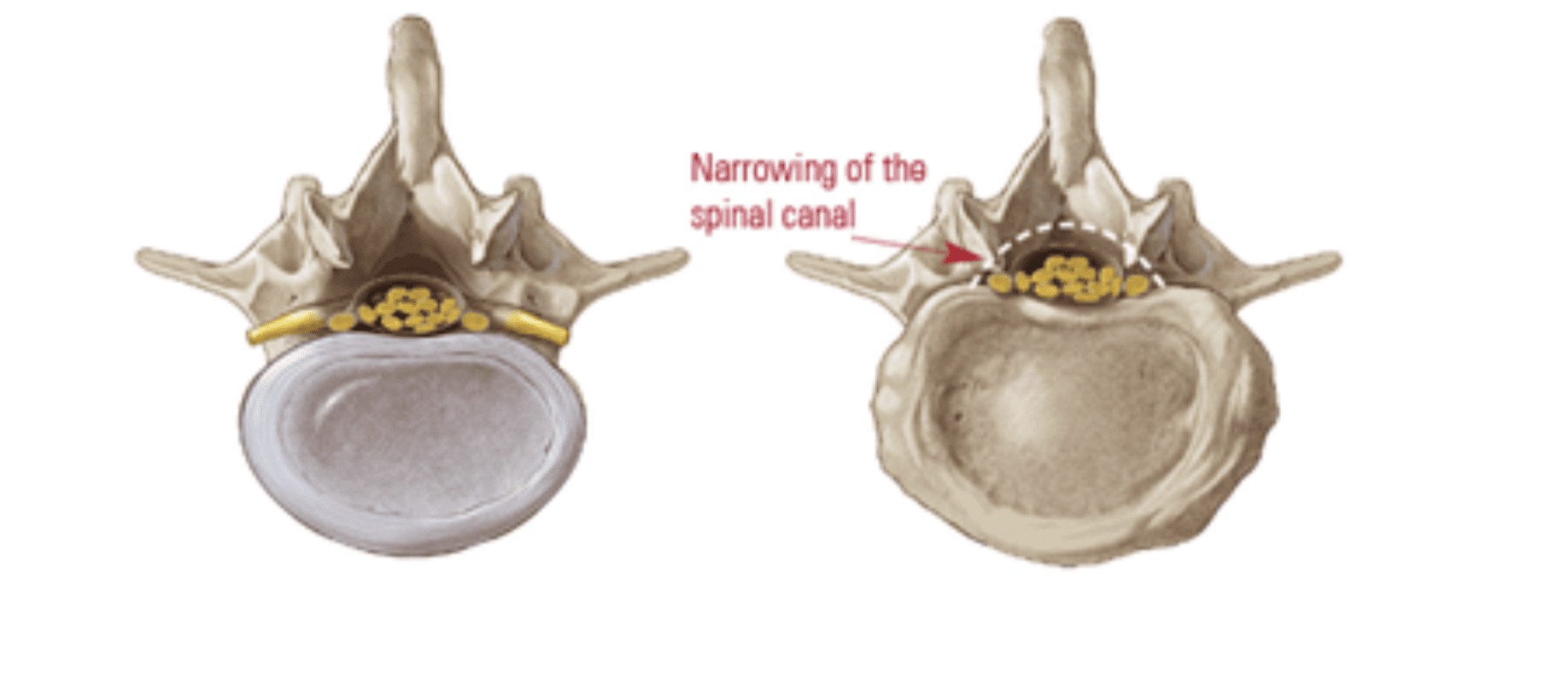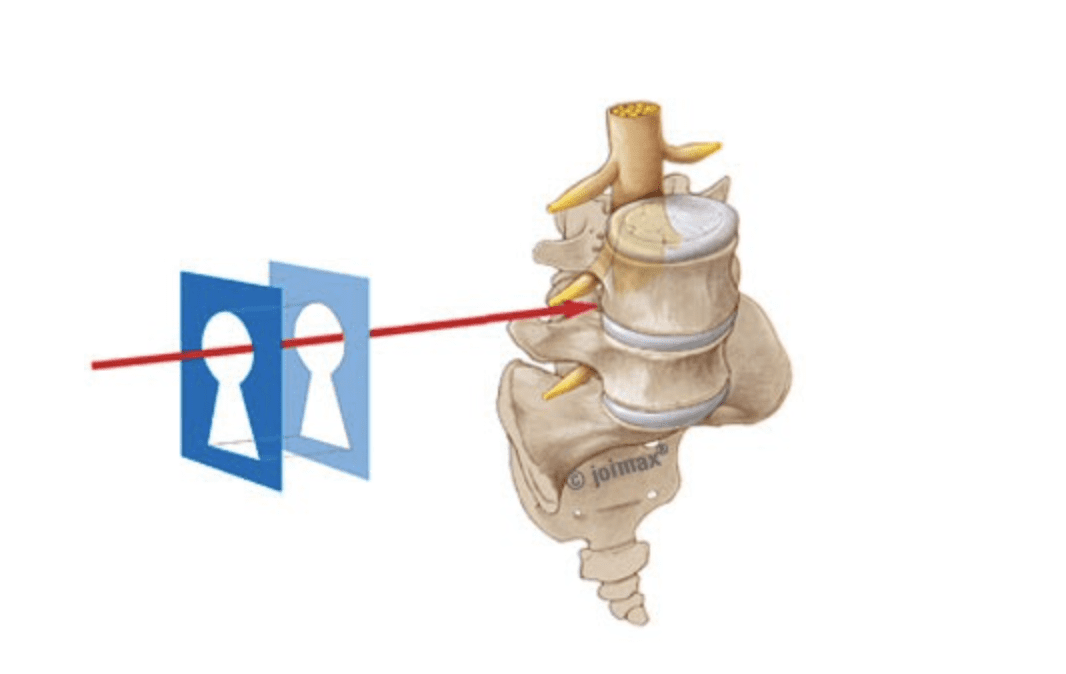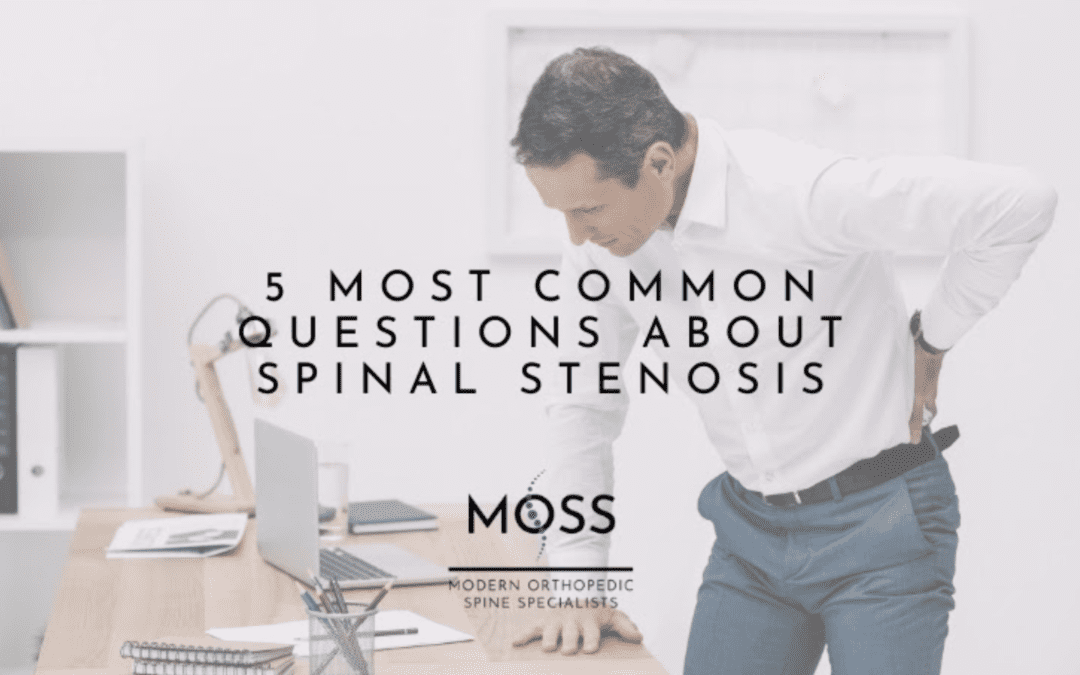Back pain can considerably affect your everyday life making normal activities not so easy anymore. When such pain makes walking or standing unbearable, you could be suffering from a condition called Spinal Stenosis.
What is Spinal Stenosis?
Your spinal nerves travel through your spinal canal and exit through openings called foramen. If any of these openings become too small, your nerves become compressed. Narrowing, or “stenosis” can result. This narrowing puts pressure on the nerves that travel through the spine, causing neck or back pain and sometimes requiring surgery..

1.)What causes spinal stenosis?
Over time and with age, intervertebral discs, vertebrae, and ligament degeneration can take place. The narrowing that results often causes nerves to be squeezed or even pinched. While wear and tear is part of the aging process, arthritis of the spine, spondylolisthesis, herniated discs, tumors, or malformation of the spine could also cause Spinal Stenosis. Other causes can be congenital factors such as developmentally narrow spinal canal.
2.)What are the most common symptoms of spinal stenosis?
- Worsening neck or back pain
- Back pain radiating to the legs
- Abnormal sensations (numbness, weakening, tingling)
- Loss of strength in arms and/or legs
- Increased pain when standing or walking
- Trouble with balance
- Loss of dexterity
- Difficulty buttoning shirts
- Spontaneously dropping objects
3.)How is spinal stenosis diagnosed?
The journey towards a Spinal Stenosis diagnosis begins with pain that disrupts your daily life. Symptoms may begin gradually and worsen over time. This prompts many patients to seek a physical and clinical examination. Doctors may then employ physical examination and/or reflex testing. Ultimately, CT or MRI Scans must be performed.
4.)When Should I get Surgery for Spinal Stenosis?
The decision to have surgery for Spinal Stenosis should be made by you and your doctor. Usually, the degree of pinching and the resulting pain indicate the need for surgery. Physical therapy, muscle training, and massage are commonly attempted initially. Advanced narrowing of the vertebral canal and worsening symptoms usually lead to surgery. Additionally, if pain has increased significantly after 3 months, an operation is more likely considered at that point.

5.) What Does Spinal Stenosis Surgery look like?
At the Modern Orthopedic Spine Specialists, Dr. Armen Oganesian uses a gentle but highly advanced surgical procedure – the Joimax method. For those patients whose stenosis is not widely disseminated but rather in early stages with a focal area, endoscopic decompression can be done. This surgery employs what is commonly referred to as the keyhole approach – meaning that sophisticated surgical instruments enter the body through an incision that is only a few millimeters long. This allows for surrounding ligaments, muscles, and bones to remain intact.

Dr. Oganesian specializes in the most modern, technically-sophisticated tools to remove impinging bony structures within the vertebral canal. By using a specialized endoscope, he can obtain a fully illuminated and detailed view of the area he’s working on.
By the end of the procedure, Dr. O. will ensure that all affected natural elements are freely moving. The instruments are removed and the minor incision is closed with only one or two stitches. This is one of many benefits to endoscopic procedures. After a few hours, you’re back on your feet. Dr. O. will let you know precisely when you may return home and resume normal activities.
The Modern Orthopedic Spine Specialists Offers Gentle & Effective Solutions
Surgery to relieve Spinal Stenosis is extremely gentle and effective with the Joimax method. The small incisions and sophisticated tools leave the stabilizing structures of the spine intact. This translates to less scarring and minimal risk of infection. Endoscopy truly is the way of the surgical future. At the Modern Orthopedic Spine Specialists, this minimally invasive surgical method is employed whenever possible. That’s because Dr. Amen Oganesian cares about you making your best recovery. He’ll do what it takes to get you back in motion – as quickly and painlessly as possible!
You shouldn’t have to live with back pain any longer. For more information on Spinal Stenosis or other Endoscopic Spinal Surgeries, please contact The Modern Spine Specialists at 805-370-0748 or email us at info@themodernspine.com.
You can also visit our office at:
250 Lombard Street
Thousand Oaks, CA 91360


Recent Comments